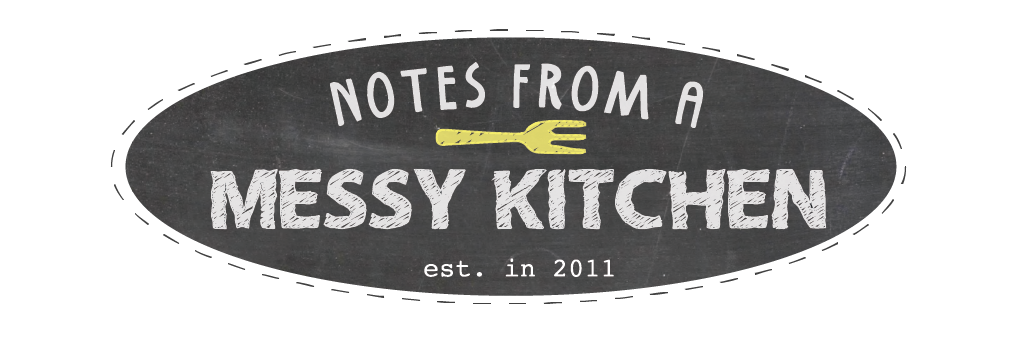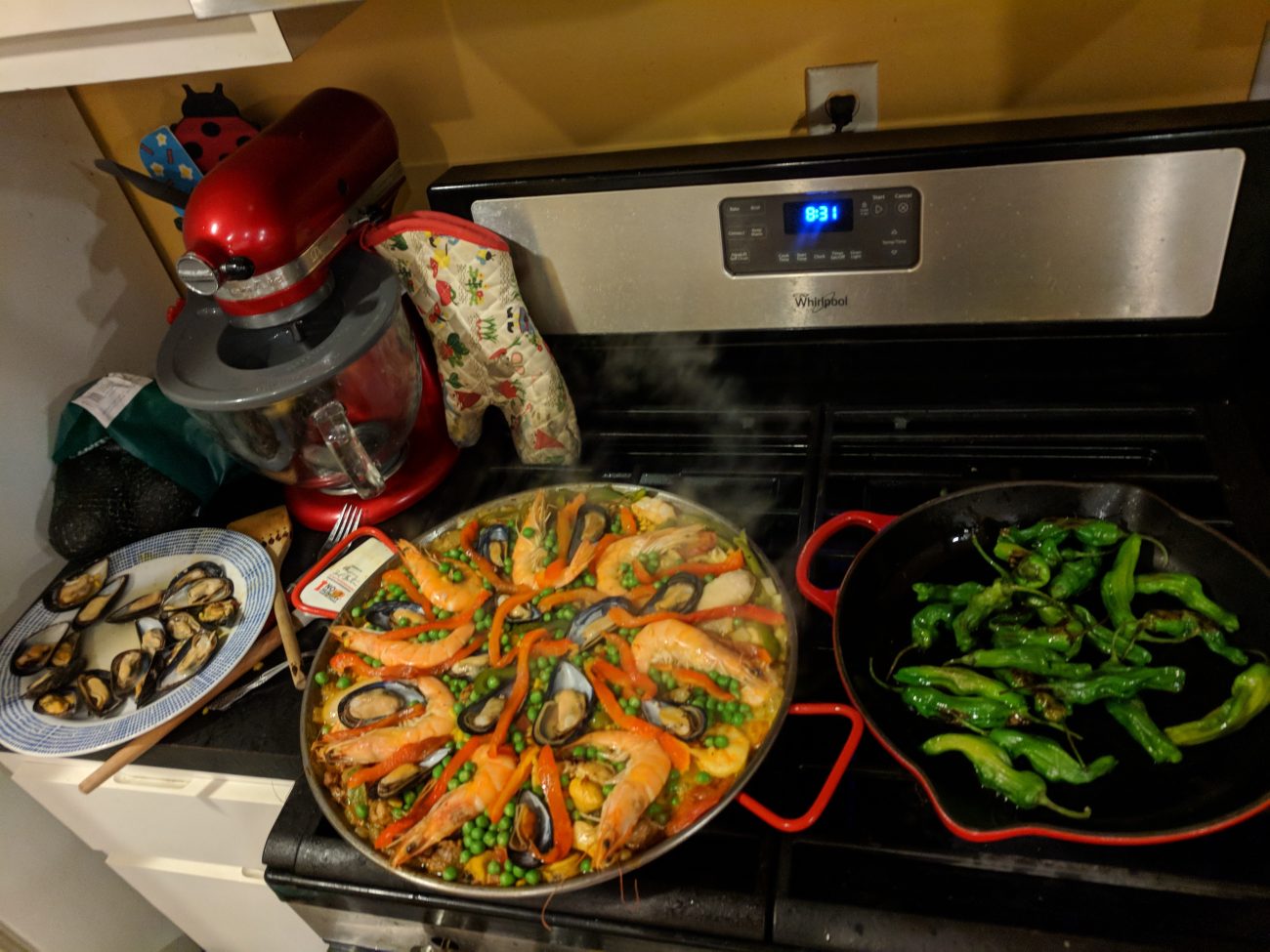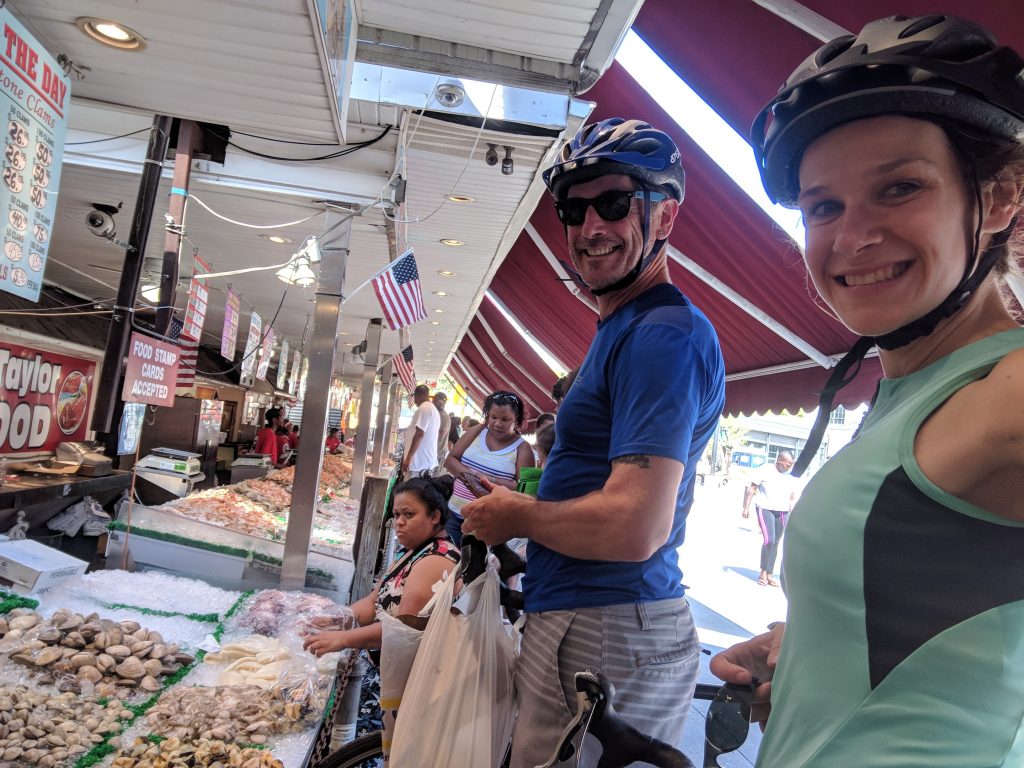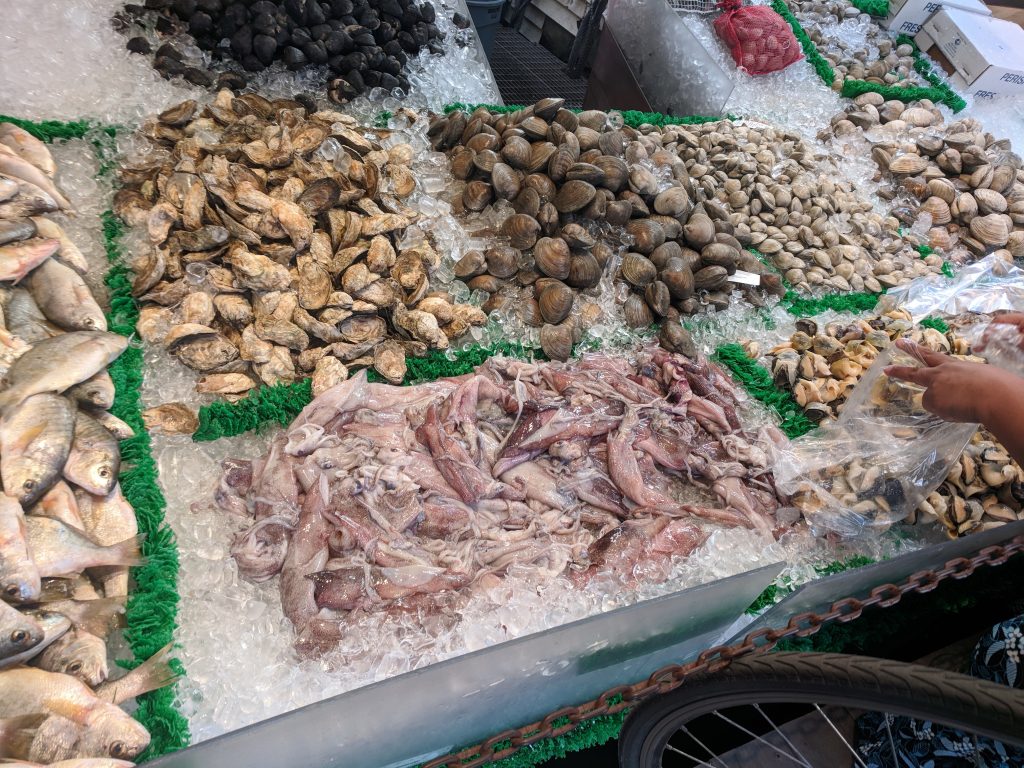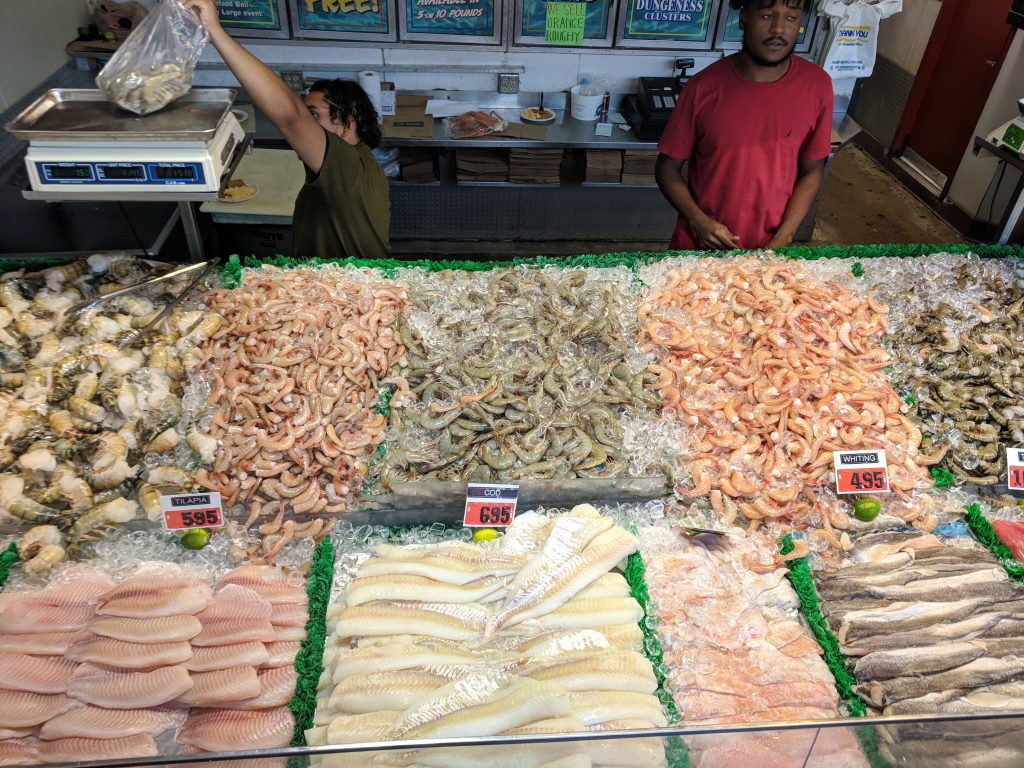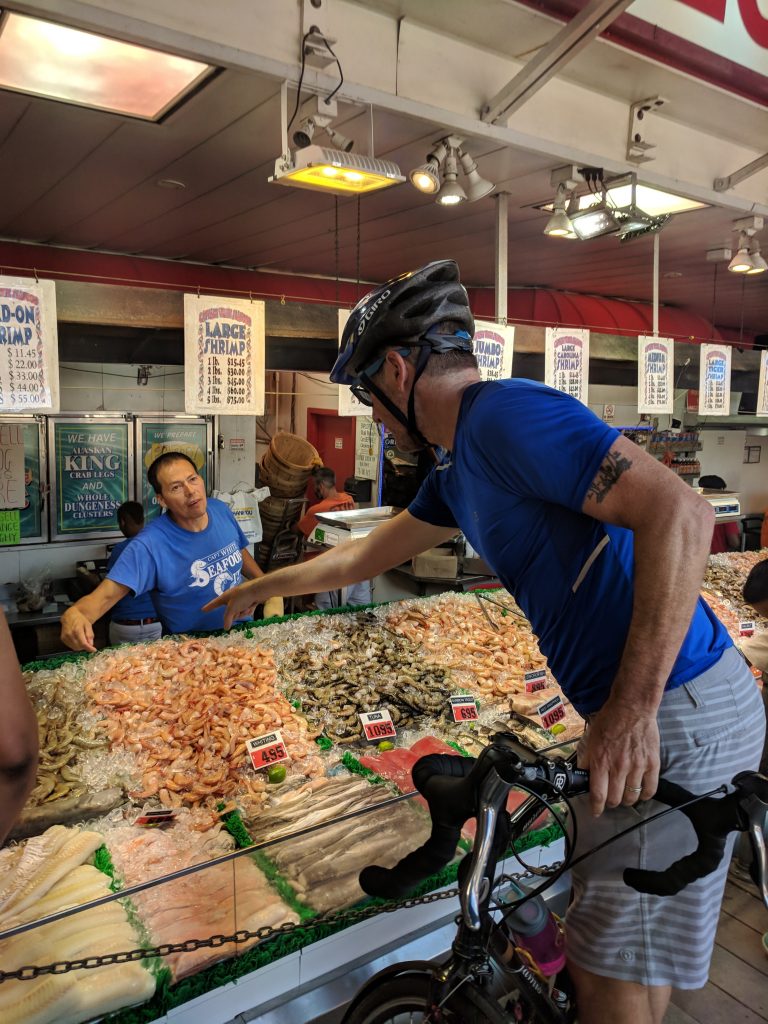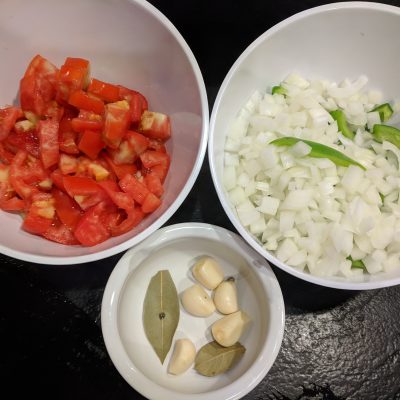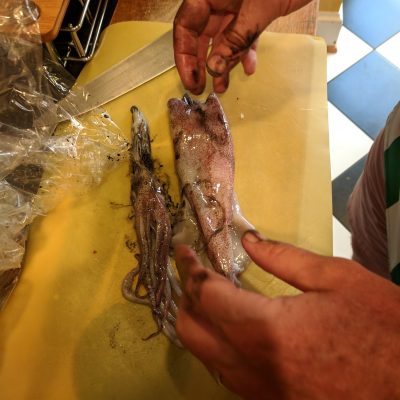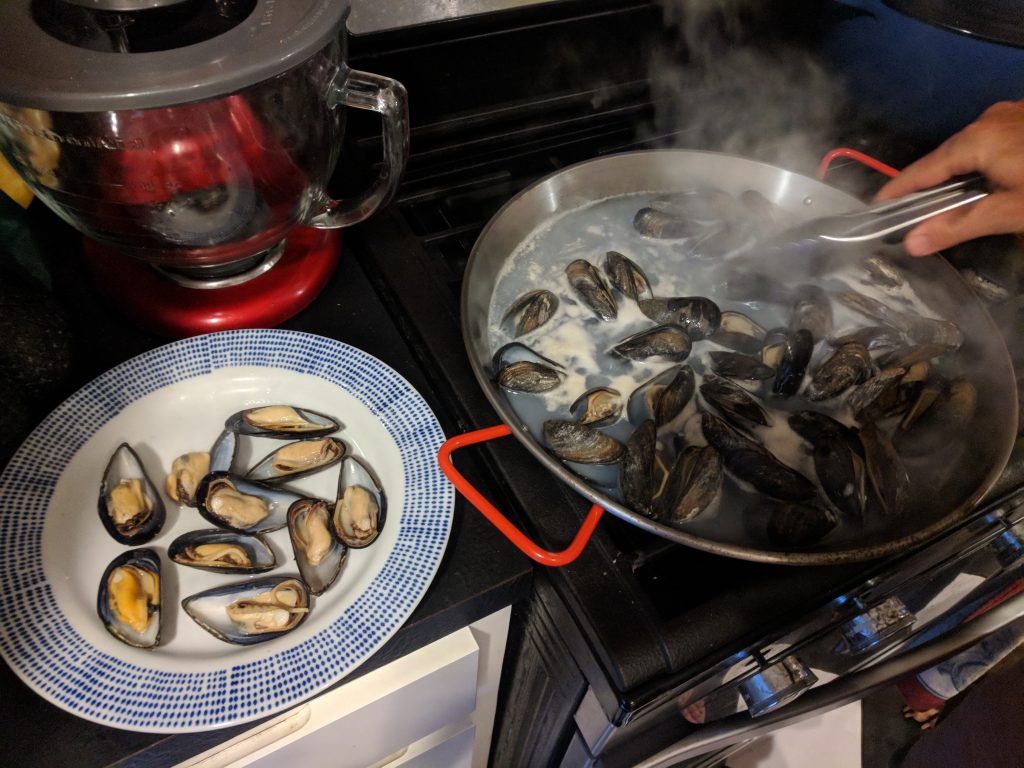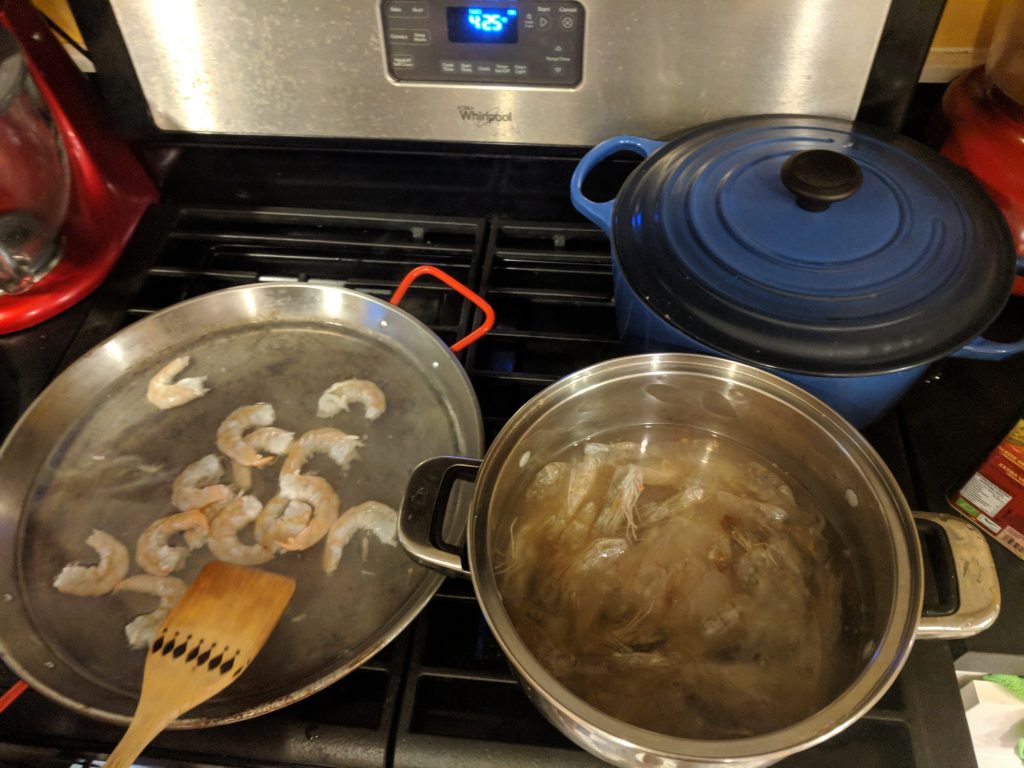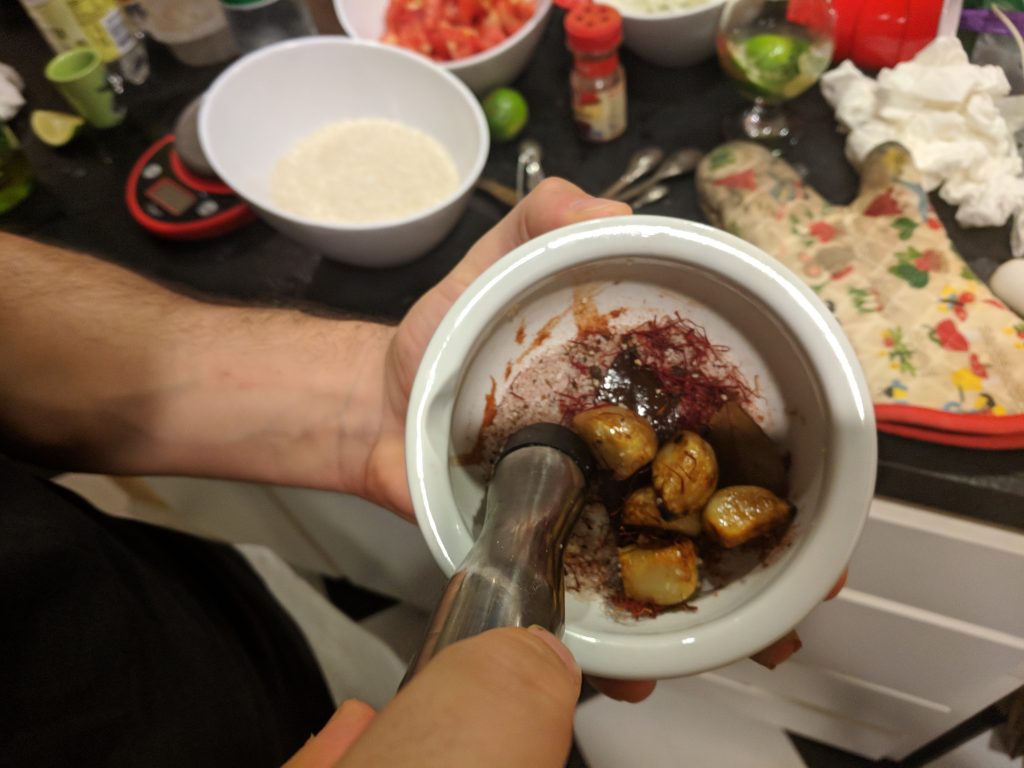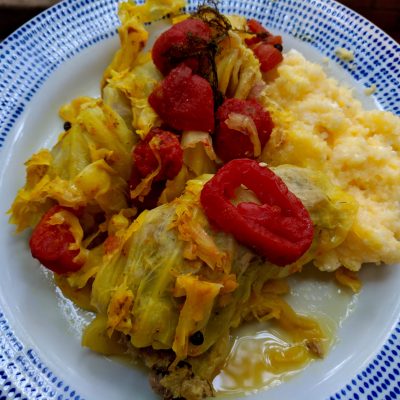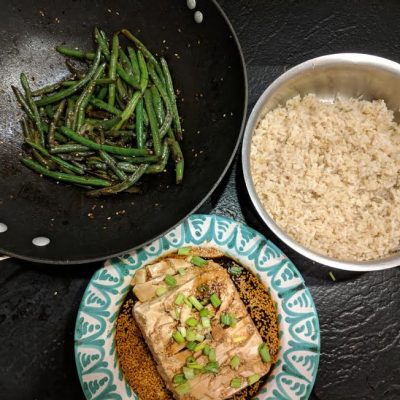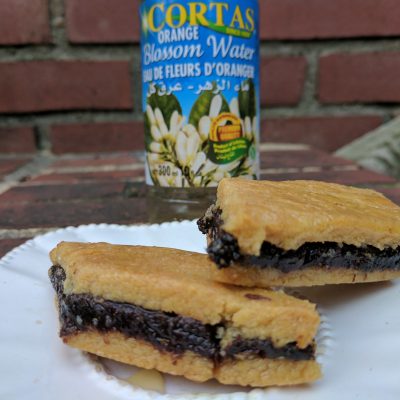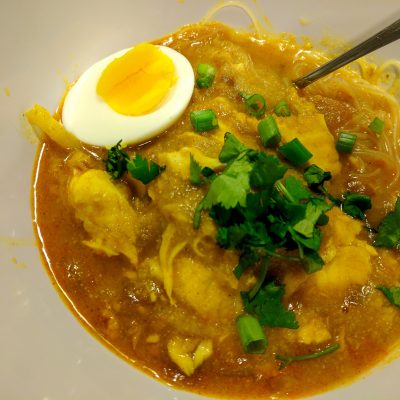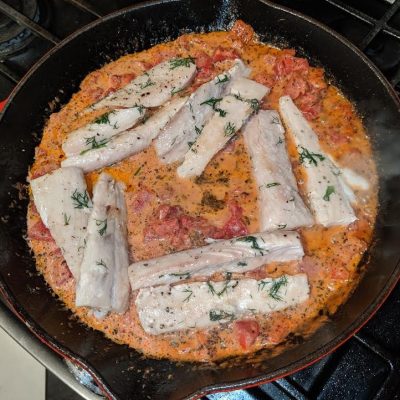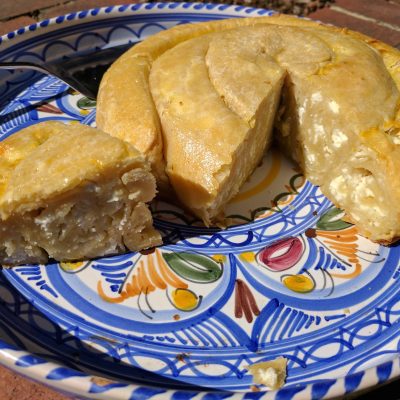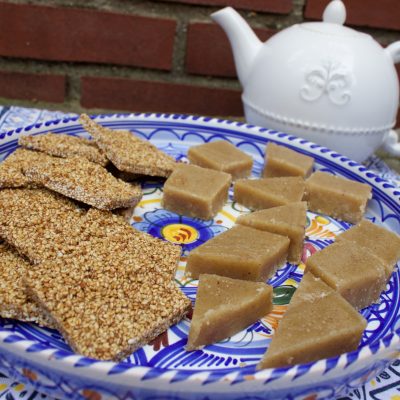Ingredients
-
1 dozen musselslive
-
1 lb prawnslarge, raw, shell on
-
1 lb chicken thighs and drumsticksbone in, skin on
-
5 cloves garlic
-
1 small yellow onionminced
-
2 green bell peppercut into strips
-
5 squid
-
2 large Tomatoes
-
1 lb short grain rice
-
1 tsp saffron
-
10 peppercorns
-
1/2 tsp paprika
-
2 tsp sea salt
-
1 small can/jar red pimento stripscan also slice roasted red pepper
-
3 1/2 oz Green Peas
-
1 bay leaf
-
1 lb chorizoin casing
Directions
If I were on death row and given the opportunity to request one last meal, it would be paella. My dad’s paella, to be precise. So you can imagine the pressure to try to recreate it just so. In fact, the pressure was such that I waited until he was here to even try.
To be honest, my paella pan had gone rusty. Believe it or not, it had only been used once – and that was two and a half years ago when I made Whole30 paella, which while delicious really isn’t paella. Luckily, dad assured me that it was nothing a quick rinse and a good use couldn’t fix.
I’ve already told you how I fell in love with paella when I shared this recipe I entitled quite literally “not my dad’s paella” – which while healthy and easy to make didn’t even entail a paella pan (a disqualifier, since the name “paella” is believed to come from the Latin word for pan: “patella”).
Anyway, at long last, I bring you my dad’s paella.
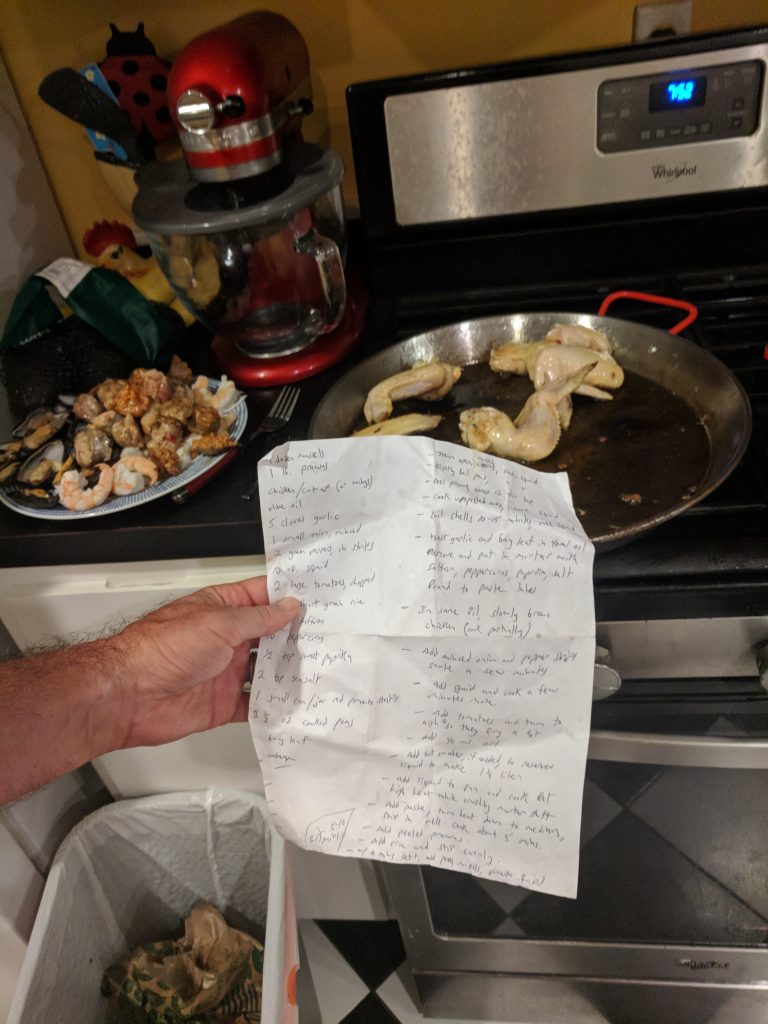
Despite having many personal feelings about paella, I’d never taken all that much time to learn about its origin. Of course paella originated in Valencia – a region of Spain I’ve never actually been to. Specifically, paella is believed to have originated through open-air meals cooked in the orchards surrounding lake Albufera and the primary protein was believed to be water vole. Unfortunately, the large amphibious rodent is impossible to find in D.C. (shocking, a rodent that’s hard to find in D.C.!?) so we went with chicken, chorizo and lots of seafood straight from the seafood market at the Wharf.
The ingredients of paella are actually fairly controversial. While saffron and short grain rice are essential to all paella, a traditional Valencian paella might include chicken, rabbit, snails , duck, butter beans, great northern beans, and runner beans (or artichoke in the winter). The other types of paella are seafood paella – common on the Mediterranean coast – and mixed paella. The latter is what my dad always makes, although apparently our use of chorizo would spark some ire, and a Spaniard from Valencia might pejoratively refer to it not as paella but as arroz con cosas (‘rice with things’).
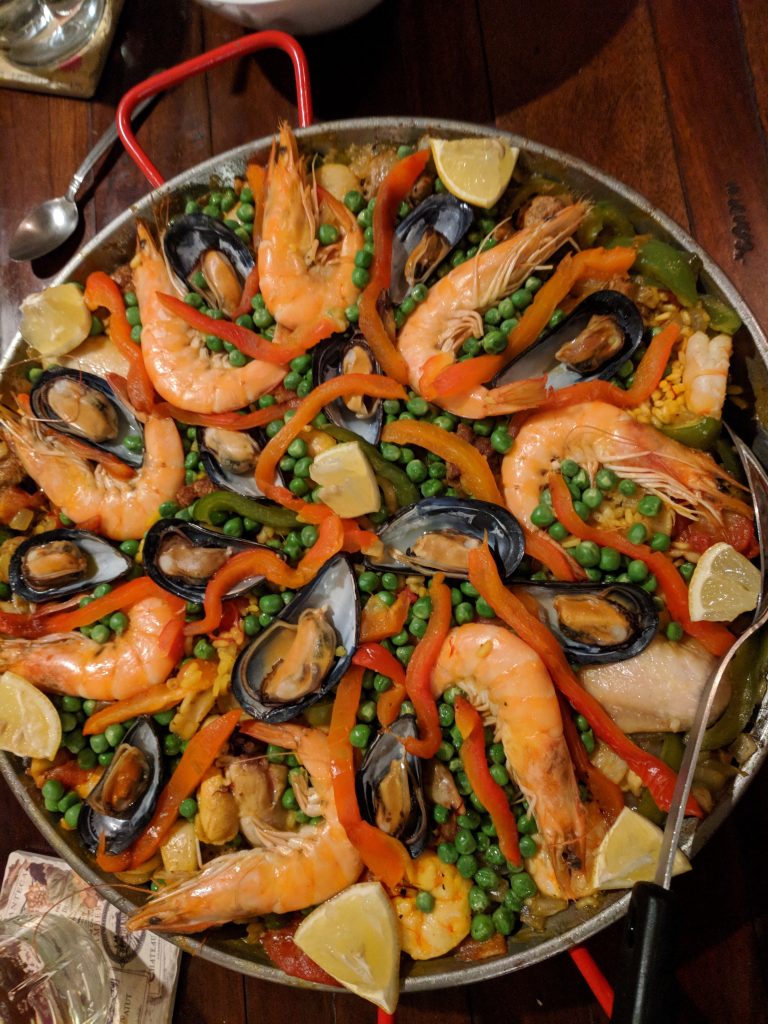
What we can all agree is that absolutely essential to a good paella is the crusty layer of toasted rice at the bottom – known as “socarrat” in Catalan. To achieve this, you must not stir the paella once all the ingredients are in place.
Another origin story is that servants would take the leftovers from Moorish royal banquets and cook it over open fires into delicious dishes they would take home to their families, in which case the word “paella” is believed to come from the Arab word “baqiyah”. This too seems plausible, as paella seems to be even better the next day as leftovers. Which reminds me, this was probably the first time I’ve ever eaten paella that we didn’t have leftovers.
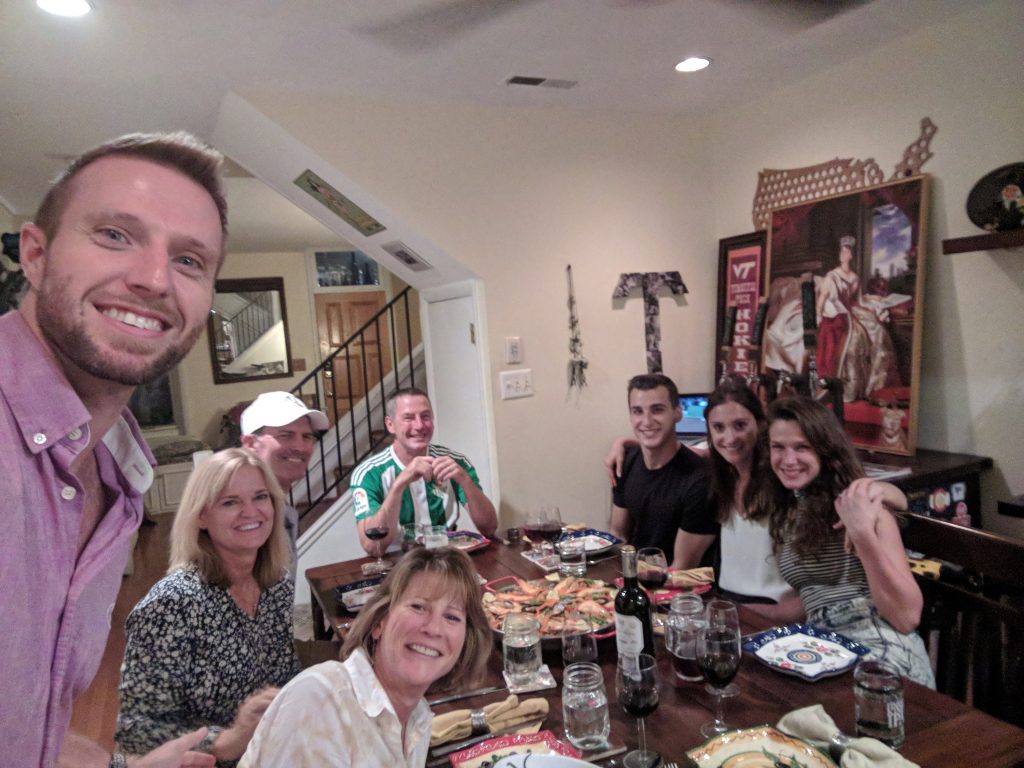
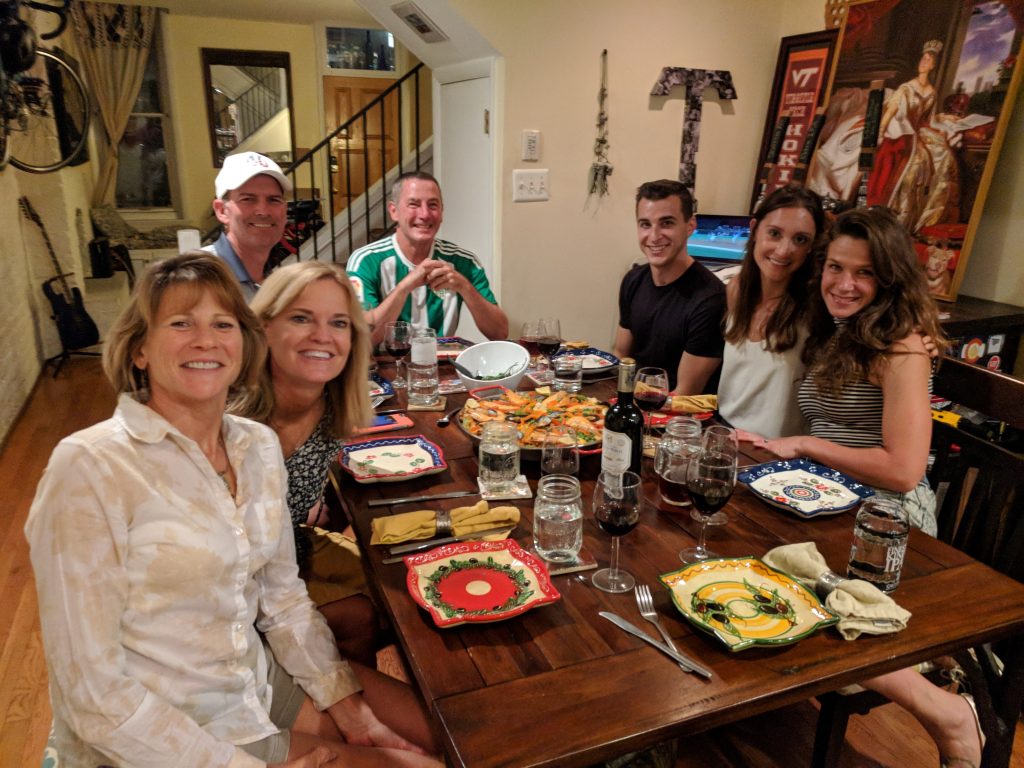
I must admit, I didn’t make this dish on my own. In fact, it was a very collaborative effort and I’ve been messaging my dad all morning asking, “remind me,when did we add the…[…]. to write out these instructions for you. But I’ll argue that the collaborative cooking process is the most fun way to make a paella!
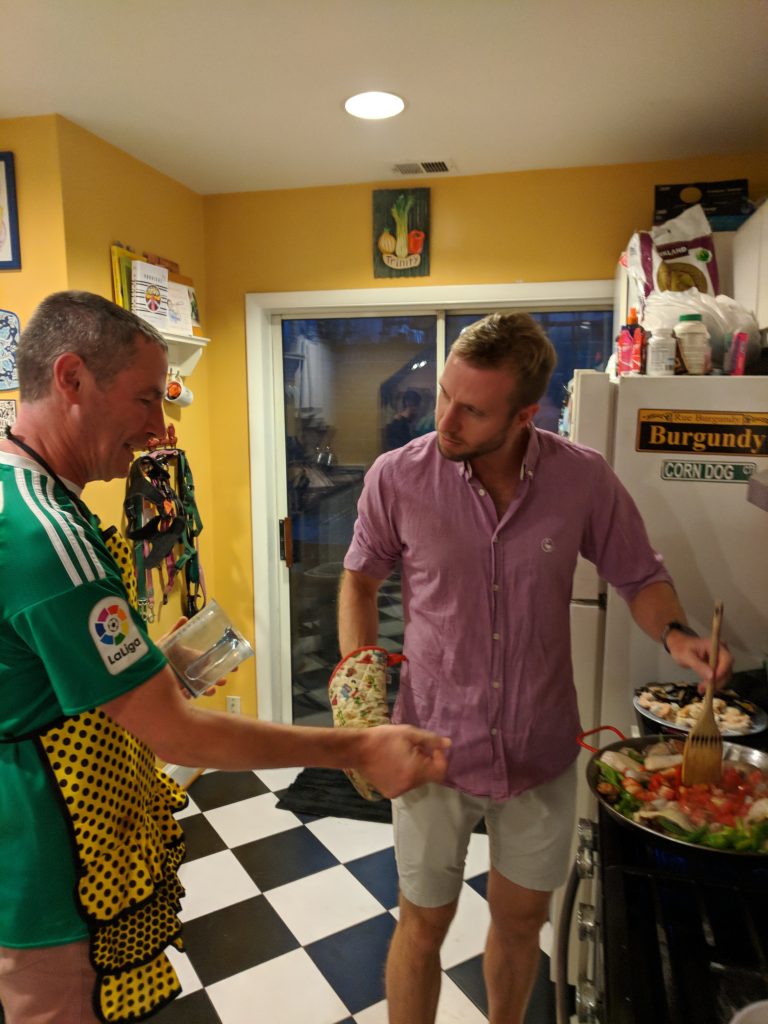
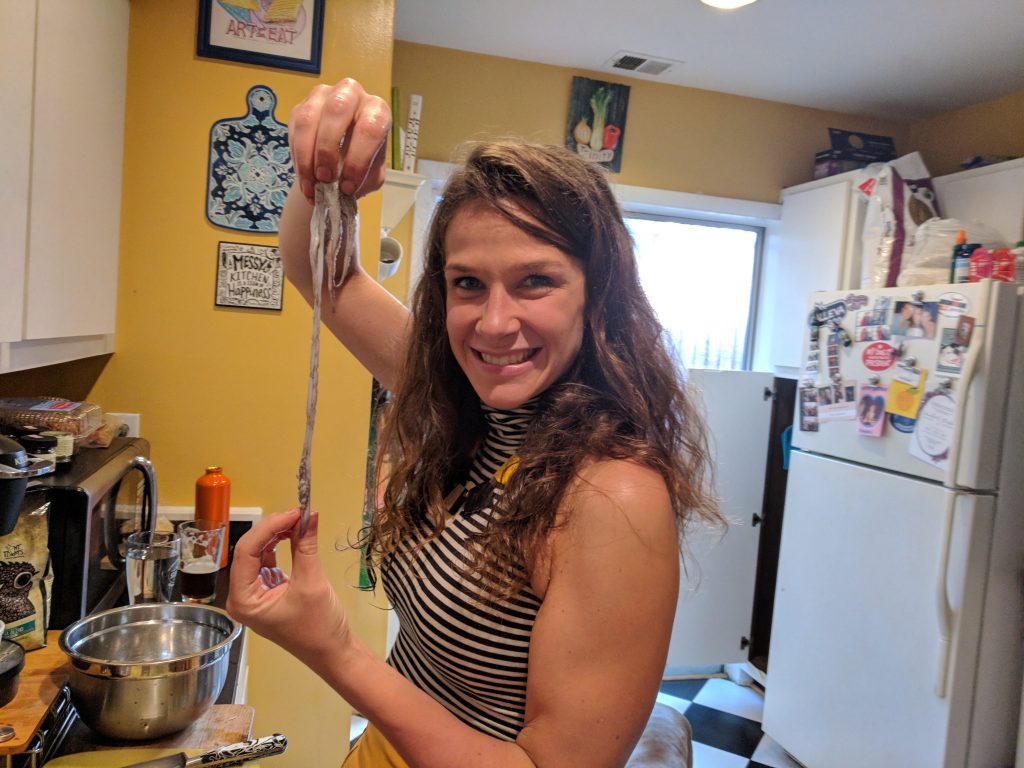
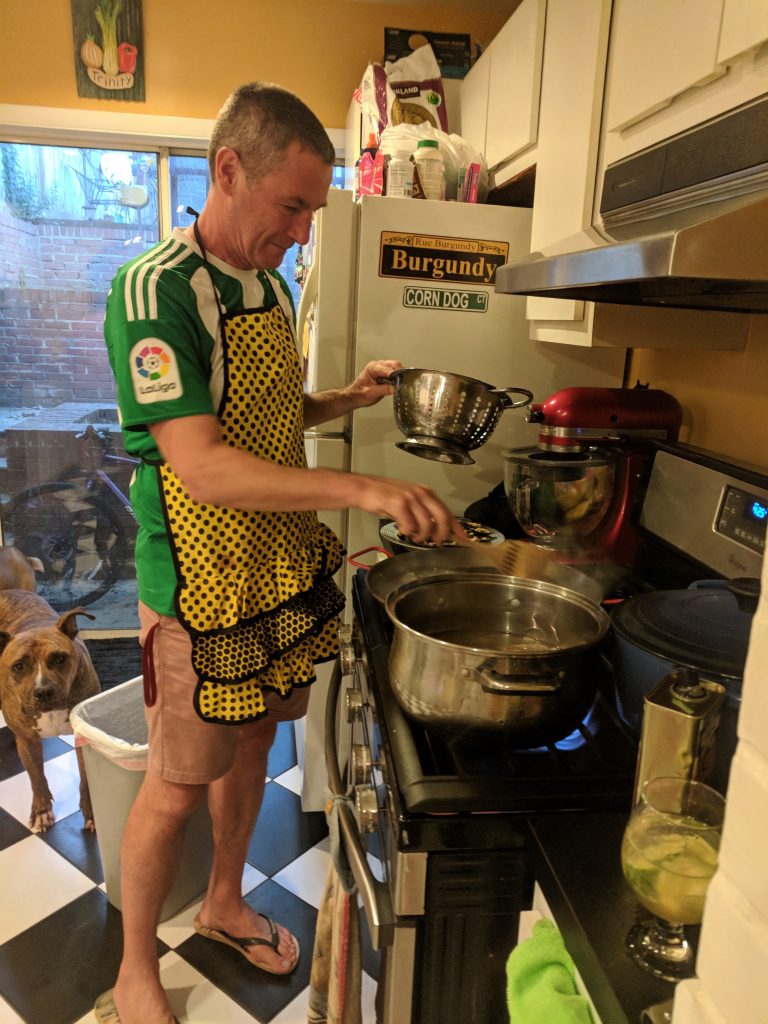
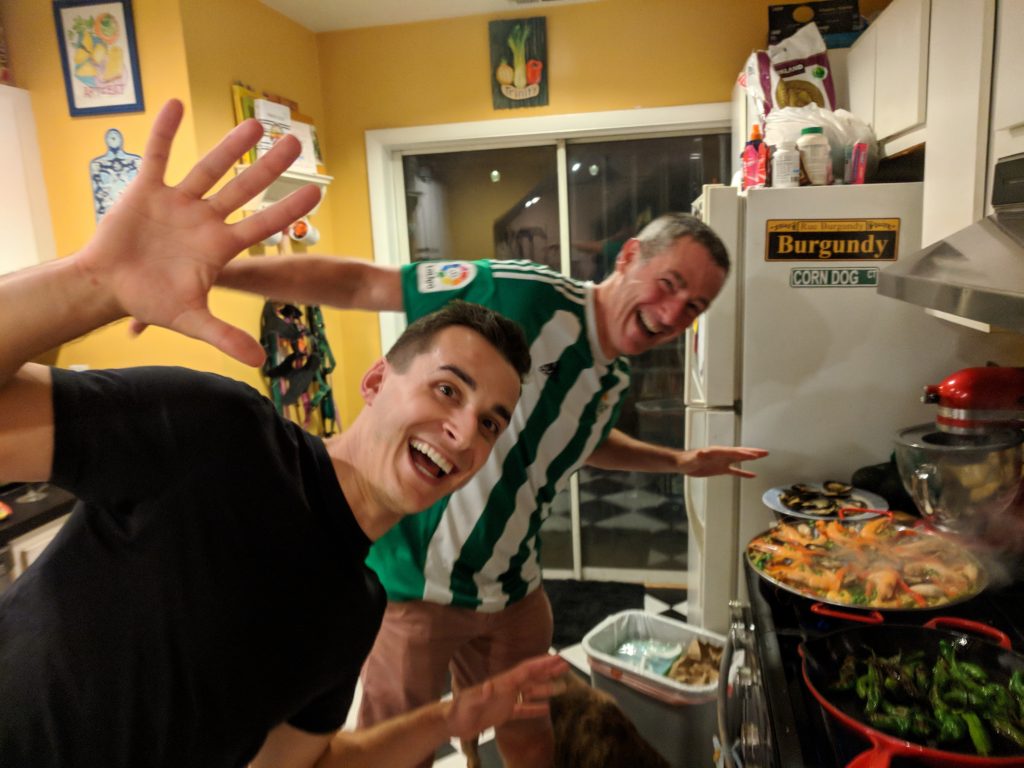
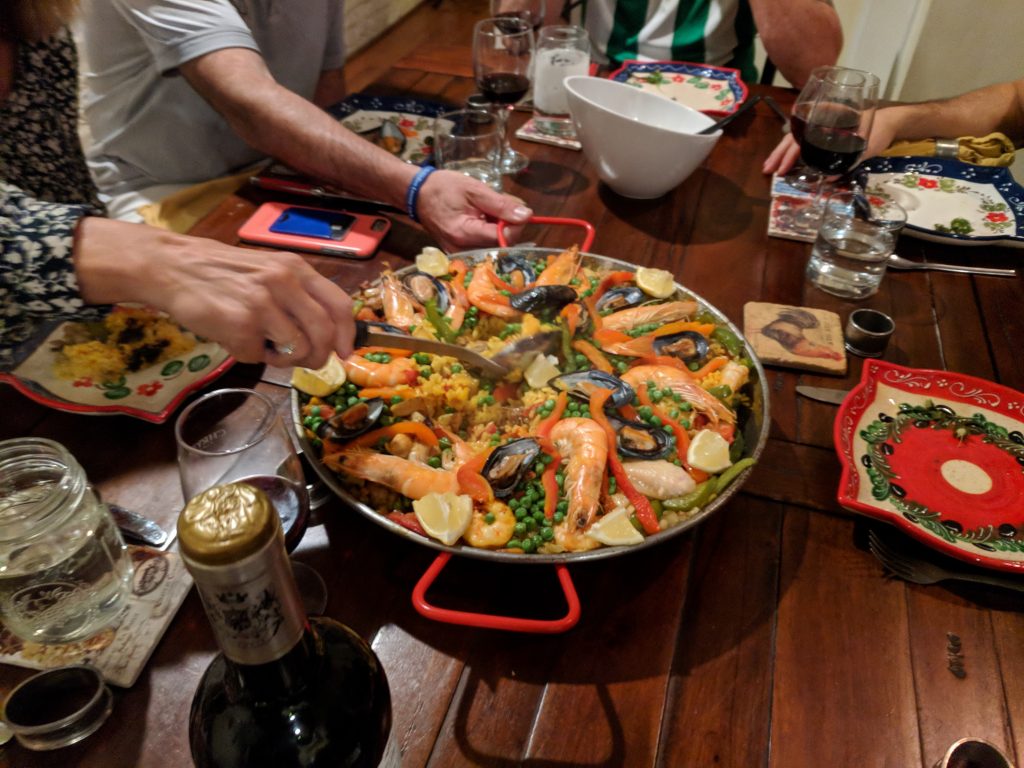
Recipe Source: Dad
Steps
|
1
Done
|
|
|
2
Done
|
|
|
3
Done
|
Slightly boil your peas. Set aside. |
|
4
Done
|
Peel prawns, except for the 12 that will grace the top of the paella. Set aside the peeled prawns, and transfer the shells to a large sauce pan. Add enough water to just cover, and boil for 10-15 minutes. Add the water to that which you've reserved from the mussels. Meanwhile, steam the unpeeled shrimp slightly in your paella pan until just pink. Set aside and reserve the liquid. |
|
5
Done
|
In your paella pan, toast garlic and bay leaf in 40ml oil. Transfer to mortar with saffron, peppercorn, paprika and salt. |
|
6
Done
|
If not pre-cooked, add the chorizo and brown on both sides. Remove from pan and set aside. |
|
7
Done
|
|
|
8
Done
|
|
|
9
Done
|
Add paste and turn heat down to medium. Stir in well and cook for about 5 minutes. |
|
10
Done
|
Add your peeled shrimp and chorizo if using non-pre-cooked. Add rice and stir evenly. This is the last time you'll stir the rice because you want to develop a nice socarrat! Cook for about 30 minutes, testing the rice for doneness. If you're running out of liquid, you can add a bit more of the seafood broth you've reserved. |
|
11
Done
|
When there are just 10 minutes left, add the peas, mussels, prawns and pimento shrimps to the top. If using pre-cooked chorizo, you would also add that on top at this time. Cook for remaining 10 minutes, then turn off the heat and let sit for 5-10 additional minutes before serving. |
